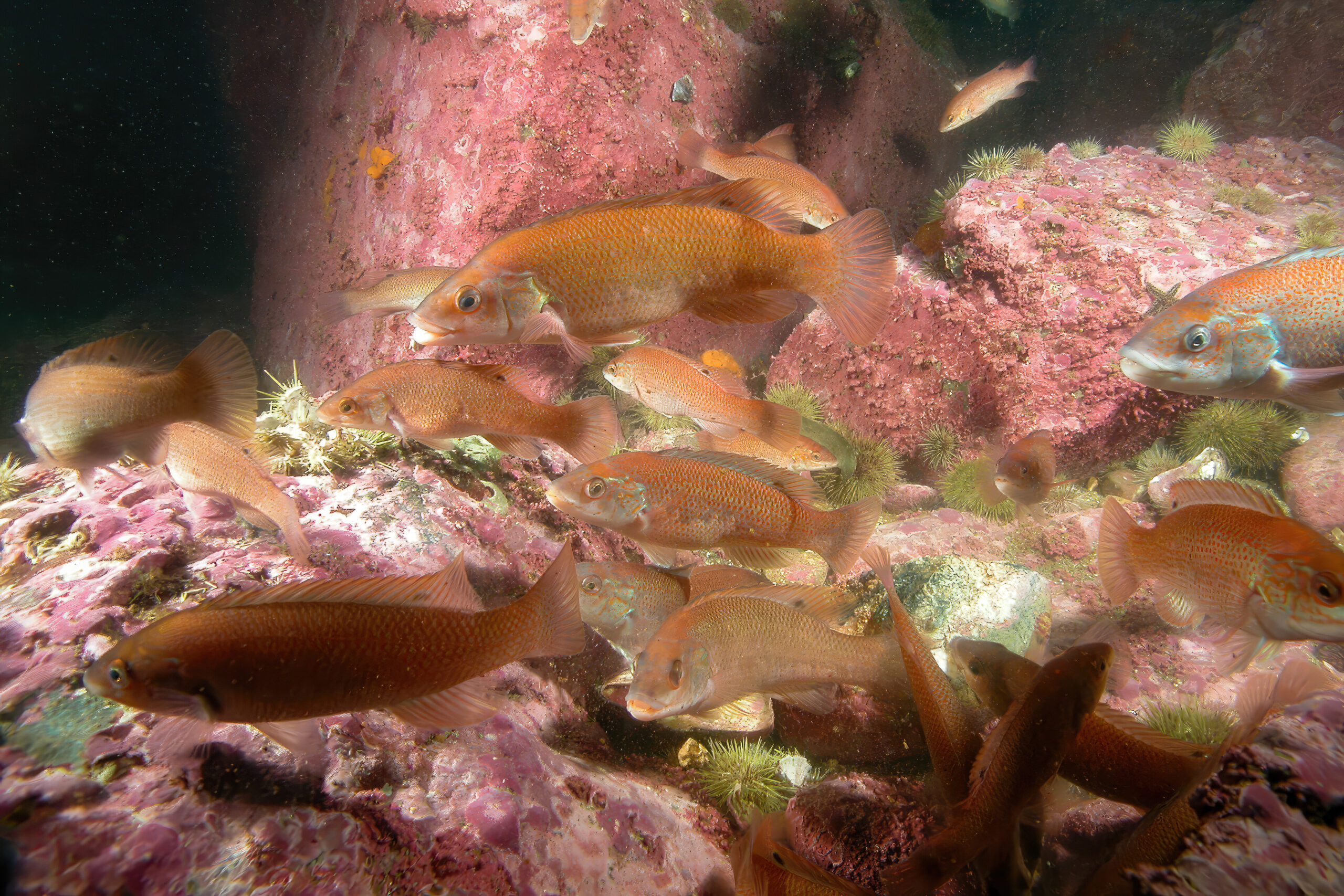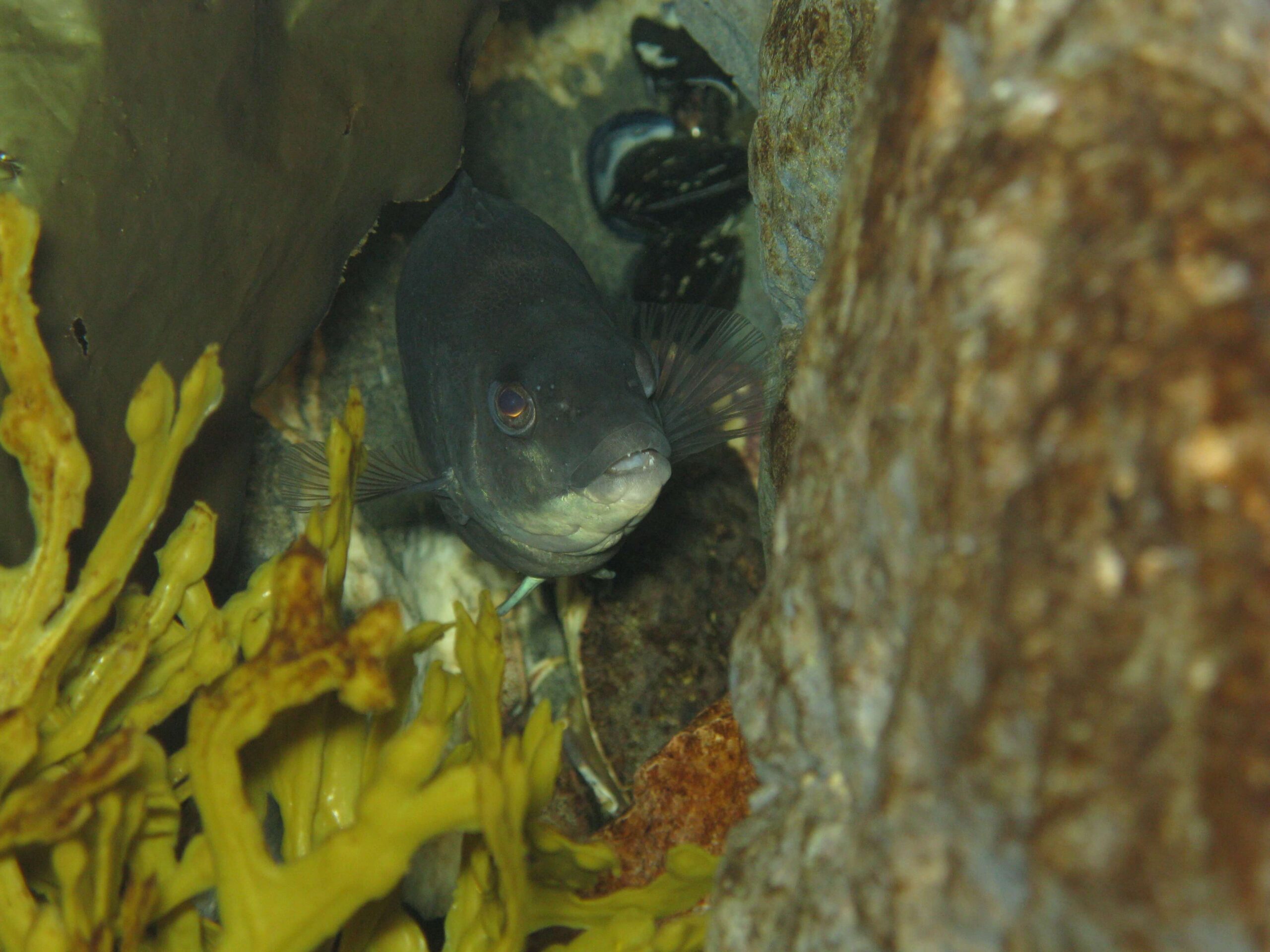
SIZE:
30 cm, up to 44 cm.
LIFE EXPECTANCY:
10 years.
LIFE CYCLE:
Sexual maturity is attained when around 3 years old.
Spawning takes place from June to mid-August in the Gulf of St. Lawrence.
Males develop a nuptial coloration, which is more pronounced, at the end of winter. They define a territory and defend it fiercely against other suitors. This territory is where the courtship of the female takes place. Males and females, swimming very close together, release their sperm and eggs into the water. Fertilization takes place externally. Both sexes can mate more than once a day.
The eggs float to the surface and hatch two or three days later.

Young cunner generally have a black spot on their dorsal fin.
Credit: Richard Larocque, photo taken in the Magdalen Islands, at a depth of 10 m.
The cunner has an elongated body, a pointed head and a broad oval tail. It has a long, uninterrupted fin on its back. Its body is covered with large, rough scales. The characteristic small mouth of the cunner has several rows of uneven, conical teeth. The cunner has large lips that are sometimes yellow.
Its colour varies depending on the nature of the marine environment in which it moves. It can be brown, blue, green or red. The belly is bluish to white. Young cunner generally have a black spot on their dorsal fin.
Close to the bottom, 10 to 130 m depth, in salt water.
The cunner is a sedentary fish that lives in coastal waters. It lives on or near the seafloor, in beds of seagrass and hard surfaces, such as rocks, wharves and shipwrecks.
Hibernation
To survive the winter, cunner go into dormancy. When the water temperature drops below 5 °C, it is not uncommon to find cunner in a state of lethargy, under rocks or in crevices. They can stop feeding for up to six months.
PREYS:
Molluscs
Crustaceans
Urchins
Fish eggs
PREDATORS:
Sculpins
Seabirds
No commercial fishing.
In the beginning
Its French name, tanche-tautogue, is borrowed from the Narragansett language of the Nahahiganseck Sovereign Nation, an Algonquin people from Massachusetts, Rhode Island and Connecticut in the United States. Today, the word “tautog” refers to the Black tautog, a fish closely related to the cunner.
Cunner is a Smarter seafood-listed species.
BENEFITS:
No information.
OUR CULINCARY ADVICE:
Be careful when eating. This fish has many bones.






